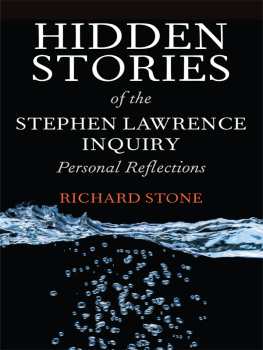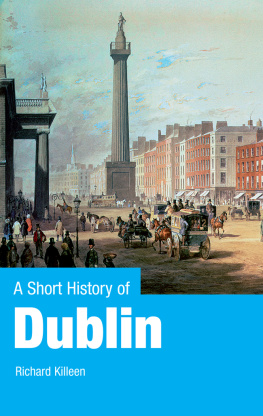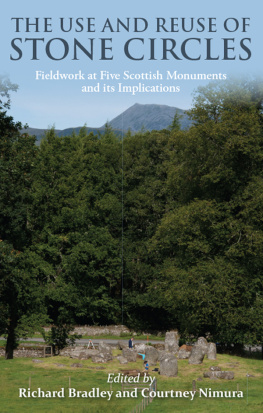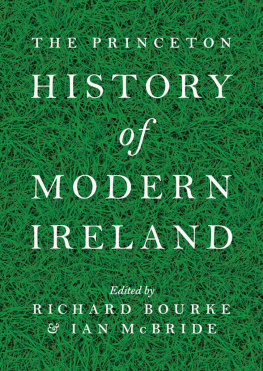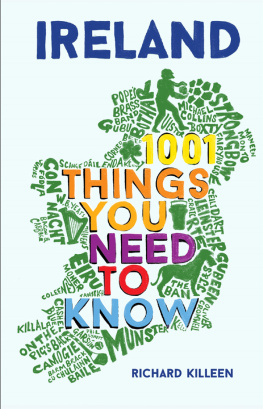Richard Killeen - Ireland in Brick and Stone
Here you can read online Richard Killeen - Ireland in Brick and Stone full text of the book (entire story) in english for free. Download pdf and epub, get meaning, cover and reviews about this ebook. publisher: Gill & Macmillan, genre: Religion. Description of the work, (preface) as well as reviews are available. Best literature library LitArk.com created for fans of good reading and offers a wide selection of genres:
Romance novel
Science fiction
Adventure
Detective
Science
History
Home and family
Prose
Art
Politics
Computer
Non-fiction
Religion
Business
Children
Humor
Choose a favorite category and find really read worthwhile books. Enjoy immersion in the world of imagination, feel the emotions of the characters or learn something new for yourself, make an fascinating discovery.
- Book:Ireland in Brick and Stone
- Author:
- Publisher:Gill & Macmillan
- Genre:
- Rating:4 / 5
- Favourites:Add to favourites
- Your mark:
- 80
- 1
- 2
- 3
- 4
- 5
Ireland in Brick and Stone: summary, description and annotation
We offer to read an annotation, description, summary or preface (depends on what the author of the book "Ireland in Brick and Stone" wrote himself). If you haven't found the necessary information about the book — write in the comments, we will try to find it.
Ireland in Brick and Stone — read online for free the complete book (whole text) full work
Below is the text of the book, divided by pages. System saving the place of the last page read, allows you to conveniently read the book "Ireland in Brick and Stone" online for free, without having to search again every time where you left off. Put a bookmark, and you can go to the page where you finished reading at any time.
Font size:
Interval:
Bookmark:

INTRODUCTION
T his book is a series of narrative and interpretative essays. It looks at aspects of Irish history, prompted by a selection of fifty buildings or other man-made artefacts. The buildings are presented roughly in the chronological order of their significance so as to maintain a general sense of narrative flow. All but three of the buildings are still extant. One of the artefacts is not a building at all, but a landscape.
This is not an attempt to write a history of Ireland. It is, of its nature, selective. The selection is mine alone. Although it cannot be comprehensive it attempts to strike a balance between the obvious and the neglected. This is more easily done as we move towards the modern era, when there is a greater availability of source material and of published work. The closer we approach the present, the more dense the historical landscape becomes and the greater the choice of subject matter one has.
None the less, there are essentials to the Irish story that cannot be ignored. It would be a nice undertaking to write about the Irish past without any reference to politics or religion, and while it would not be a completely false exercise it would hardly fool anyone for long. There are dozens of quotidian concerns that make up the stuff of history but which get marginalised by grand narratives: diet, dress, sanitary arrangements, transport, money, childbirth, plagues, shelter, communication, housekeeping, literacy, dentistry, shopping. The list goes on. Some of these subjects are touched on at points in this book, although the reader will be pleased to learn at the outset that the author has resisted the temptation to dilate on either dentistry or childbirth, on the grounds of profound ignorance.
One may think of this book, therefore, almost as a series of personal snapshots. It is predicated on the simple and obvious proposition that history is about the transformation of land and landscape by human volition. The changes thus wrought become decisive when we cannot imagine I mean that literally the world before the transformative event. To select from the list above, our modern imaginations find it almost impossible to envisage a world without electricity, flush toilets and department stores. Yet these are all inventions and developments of the last 200 years. The series of events and locales described in this book cover a period of more than 1,500 years. It is one thing to know that most of our ancestors and not just our remote ancestors had to do without these and other marvels. It is quite another to imagine how they actually lived.
This is the hardest task for any historian, to set aside the automatic assumptions which constitute the silent grammar of modern life when fumbling for an understanding of a world in which these things were not merely absent, but had not yet been dreamed of or imagined.
History too is a fairly modern discipline. As an academic subject, it is effectively a nineteenth-century invention, and it runs in parallel with the development of European nationalism. National grand narratives still form the backbone of history writing, pushing the quotidian stuff to one side, but also furnishing readers with a structure and a context for the partial recovery of the past. Without that structure, we simply dont have the vocabulary to attempt the task at all.
This book is a modest attempt to look at occasional aspects of ordinary social life without losing sight of that larger narrative. Like all compromises, it may fall between two stools. That is for you, dear reader, to decide.
RK, Dublin, February 2012


T he remains of Slane Friary, on a hill overlooking the modern village of Slane in Co. Meath, can be clearly seen from the road as one approaches the village from Dublin. This is the main road to Derry and western Ulster. At Slane it crosses the River Boyne just a few miles to the west of Br na Binne the bend of the Boyne where the river turns in a U-shape before resuming its eastward journey to the sea at Mornington. Within the U lie the Neolithic sites of Newgrange, Knowth and Dowth, the first of these being one of the true wonders of Ireland.
As old as the Egyptian pyramids, Newgrange is a passage tomb, a burial site. It is 11 metres high and over 80 metres in diameter, with a corbelled roof that has kept the interior dry for nearly four millennia, this in a country with abundant rainfall. A series of gutters carry rainwater to the margins of the tomb, where it runs off harmlessly. The tomb is aligned to the rising sun on midwinter day, for on that day and that day alone a lightbox over the entrance admits the rays of the sun, just breaking the horizon to the east, to flood the full length of the entry passage and to strike the back wall of the central burial chamber. The unknown pastoral people who built this and other extraordinary structures long antedated the Celts.
The Celtic peoples who occupied Ireland from about 300 BC and created a common linguistic culture throughout the island also established themselves in this lush river valley and its environs. This is rich limestone land, perfect for the pastoral rural economy of the Celts, as it had been for all the peoples that preceded them and whom they had obliterated from history. The royal site of Tara seat of the kings of the southern U Nill lies just 15 km to the south west. This was a provincial centre of some importance, although its later inflation into the seat of the high kings of Ireland was a nationalist whimsy: there was no such centralised authority in Celtic Ireland. Tara had been a site of military and strategic importance in pre-Celtic times, for like Cashel in Munster it commands a stunning view of the flat country all around and is therefore a formidable defensive position. It has evidence of human settlement from as far back as the 3rd millennium BC.
For all the early inhabitants of Ireland, this was a landscape worth possessing. So it is no surprise that the story of Christianity in Ireland starts here, albeit with what is certainly a fable. According the legend, St Patrick converted the local king at the hill above Slane to Christianity by showing him a shamrock and explaining that the trefoil leaves in the one plant represented an image of the unity of the Trinity.
According to the ballad, St Patrick was a gentleman he came of dacent people. True. He is for the most part a figure of mystery, although the shadow of the real person is discernible. And this is for a reason: that he is the first figure in the history of the island to leave us a written record of any kind. In his case, he has left us a record of himself, a kind of displaced autobiography.
Two fragments are all we have, but they are undoubtedly the work of his hand. So, who was he? He was the son of a Romanised British family, born in the early fifth century, who had been captured by Irish piratical raiders and sold into slavery. His family were Christian, like all the late Roman elite, metropolitan and provincial alike. Having eventually escaped back to Britain, he dreamed that he was being recalled to Ireland to evangelise the island for Christ.
He was probably not the first Christian missionary in the country but he was certainly one of the most potent. His mission was confined to the northern half of the island: the southern half contains no verifiable Patrician sites. And the two documents he has left us? The first, and more important, his
Next pageFont size:
Interval:
Bookmark:
Similar books «Ireland in Brick and Stone»
Look at similar books to Ireland in Brick and Stone. We have selected literature similar in name and meaning in the hope of providing readers with more options to find new, interesting, not yet read works.
Discussion, reviews of the book Ireland in Brick and Stone and just readers' own opinions. Leave your comments, write what you think about the work, its meaning or the main characters. Specify what exactly you liked and what you didn't like, and why you think so.



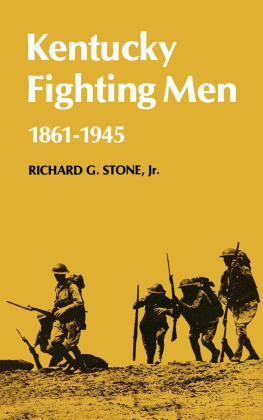
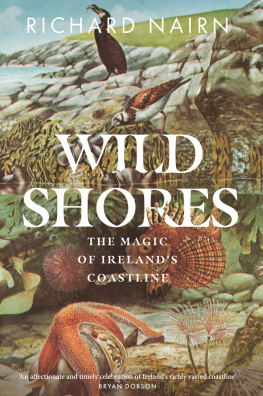
![Richard Arnold Bermann - Ireland [1913]](/uploads/posts/book/266250/thumbs/richard-arnold-bermann-ireland-1913.jpg)
